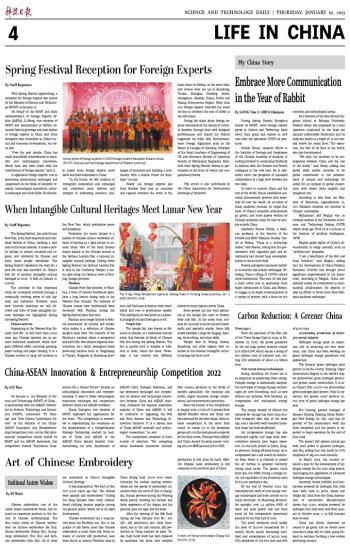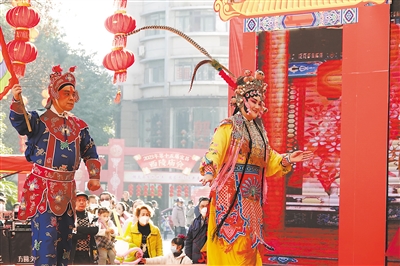
 |
| The 11-day Xiling Temple Fair opens at Jiefang Road in Yichang, Hubei province, Jan. 7, 2023. (PHOTO: VCG) |
The Spring Festival, also called lunar New Year, is the most important and cherished festival in China, marking a new year on the lunar calendar. It is also a public holiday in certain countries and regions, and celebrated by Chinese and some Asian people worldwide. The Spring Festival represents the wish for a new life and was inscribed on China's first list of national intangible cultural heritages in 2006. It falls on January 21 in 2023.
The activities in this important event are constantly enriched through a continually evolving series of rich legends and traditions. However, some time-honored traditions are still followed and three of these intangible cultural heritages are highlighted during the Spring Festival.
Chinese lanterns
Originating in the Western Han Dynasty (206 BC- 24 AD) more than 2,000 years ago, Chinese lanterns are an ancient traditional handicraft, which integrate different skills, including painting, paper-cutting and paper binding. It is a Chinese custom to hang red lanterns in the New Year, which symbolizes peace and prosperity.
Nowadays, the iconic lantern is a symbol of Chinese culture worldwide instead of serving as a light source in ancient times. One of the most famous events related to the Chinese lantern is the Qinhuai Lantern Fair, a national intangible cultural heritage. During every Spring Festival, the Qinhuai Lantern Fair is held in the Confucius Temple, a scenic spot along the Qinhuai river in Nanjing, Jiangsu province.
Nianhua
Chinese New Year pictures, or Nianhua, a form of colored woodblock print, have a long history dating back to the Western Han Dynasty. The majority of Chinese homes have traditionally been decorated with Nianhua during the Spring Festival since that time.
Nianhua is no longer limited to festival decorations; its cultural and artistic value makes it a reflection of Chinese people's daily lives. The majority of the Nianhua's contents depict a prosperous and joyful life, with distinct regional characteristics. As a result, prestigious bases producing nianhua such as Yangliuqing in Tianjin, Yangjiabu in Shandong province, and Taohuasu in Suzhou were established and rose to prominence rapidly.This traditional art was listed as a national intangible cultural heritage in 2008.
Temple Fair
The temple fair, also known as Miaohui in Chinese, is a traditional cultural event that features all kinds of Chinese folk arts during the Spring Festival. The fair is usually held at temples or adjacent to them, hence the name. Nowadays, it has evolved into different themes in many regions across China.
Some people can buy local specialties at the temple fair, such as flowers, birds and fish. At the same time, artisans set up stalls to show and sell handicrafts and specialty snacks. Some folk artists establish a stage for singing, dancing, story-telling, and other skills.
Temple fairs in Beijing, Shanxi, Shandong, and other regions were included in the national intangible cultural heritage list from 2008.







